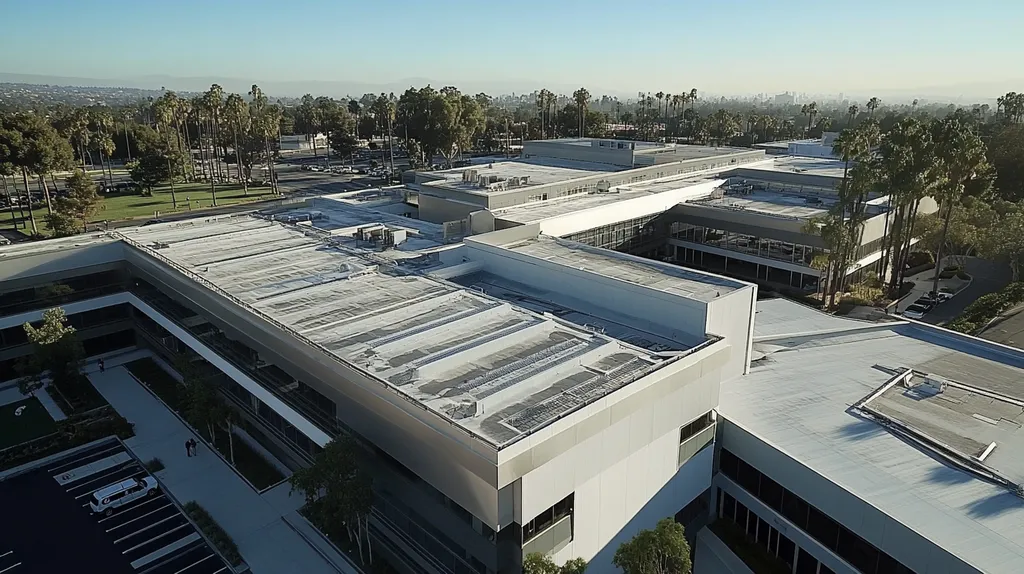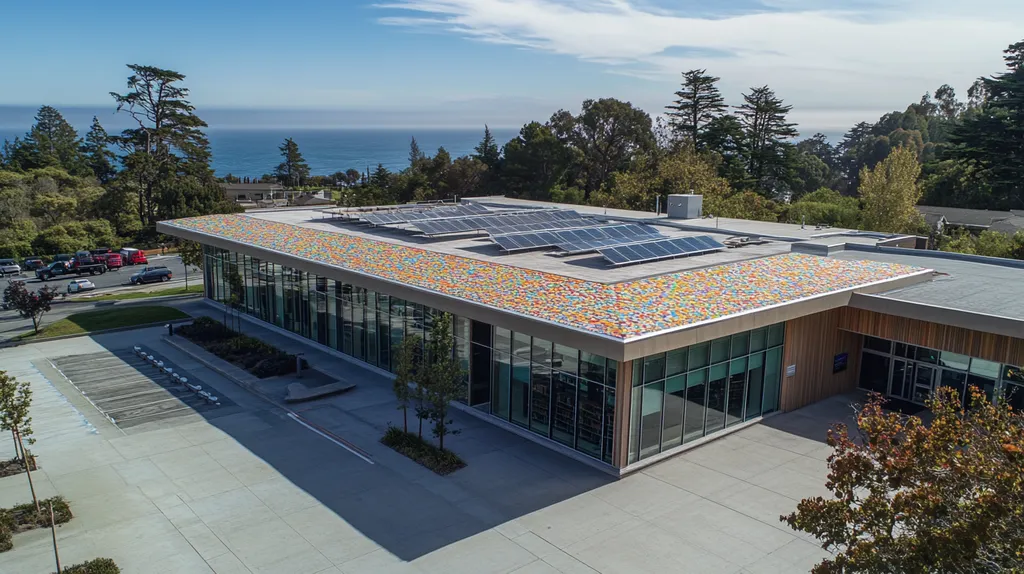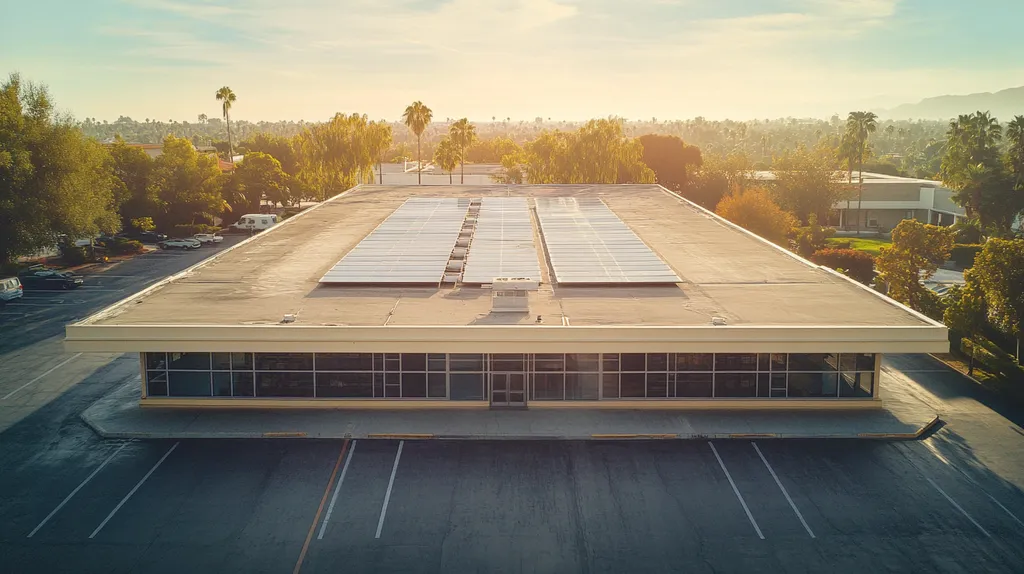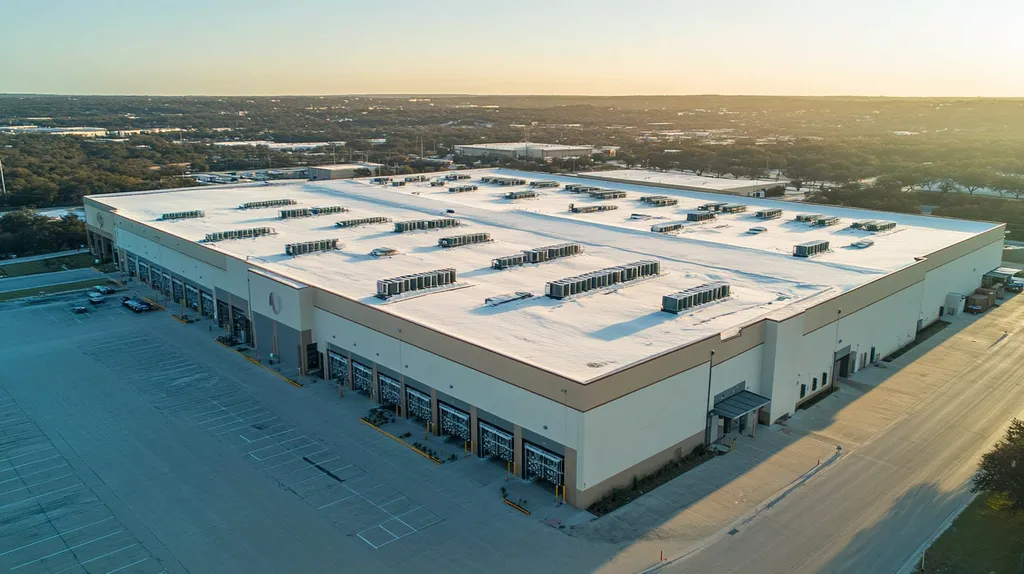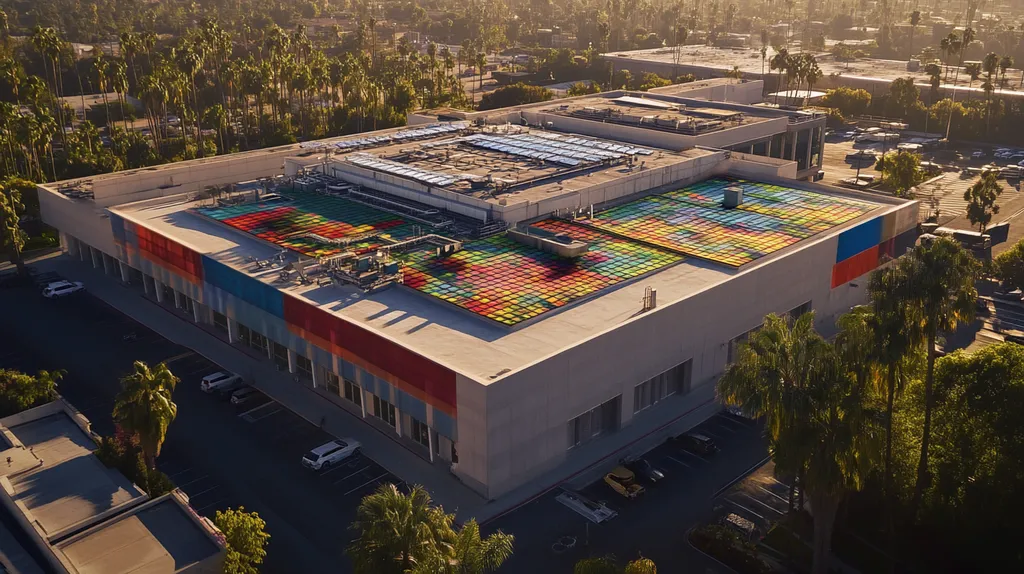Industrial roof repairs disrupt operations in 85% of manufacturing facilities annually, causing an average of $157,000 in lost productivity per incident. Yet widespread misconceptions about timing, scope, and necessity of repairs continue to plague facility management decisions.
From minimizing production delays to protecting worker safety and maintaining regulatory compliance, understanding the real impact of roofing repairs has become critical for modern facility operations.
This analysis separates fact from fiction regarding industrial roof repairs, examining common myths, operational implications, and evidence-based solutions that protect both infrastructure and bottom line.
SECTION 1: COMMON MISCONCEPTIONS
Industrial roofing decisions can make or break facility operations, yet many managers operate under misconceptions that cost millions in preventable damage annually. Data shows that 85% of roof failures stem from delayed maintenance due to these common myths. Understanding the reality behind these misconceptions is crucial for protecting both the facility’s infrastructure and its bottom line.
Minimal Leaks Are Not a Problem
The idea that small leaks can wait for attention represents one of the most dangerous myths in facility management. Even a pinhole-sized water intrusion can saturate internal insulation, corrode metal decking, and compromise structural integrity within months.
Water infiltration creates a cascade of costly problems beyond the roof itself. Moisture leads to mold growth, degraded air quality, and potential contamination of production areas – issues that can shut down operations entirely.
Modern detection methods like infrared scanning can identify hidden moisture before visible damage occurs. This technology allows facility managers to address developing problems while repairs remain simple and contained.
The financial impact of neglecting small leaks compounds rapidly. What starts as a $500 repair can escalate into a $50,000 replacement when left unchecked, not including lost productivity and damaged inventory.
Repairs Stall Business Operations
Many facility managers delay essential repairs fearing operational disruptions. However, modern roofing contractors employ sophisticated scheduling and staging techniques that minimize impact on daily operations.
Strategic timing of repairs during planned downtimes, shift changes, or weekends can virtually eliminate production interruptions. Mobile crews can complete most repairs in sections, maintaining facility access throughout the process.
Advanced materials and application methods have dramatically reduced cure times and chemical emissions. This means areas can often return to full operation within hours rather than days.
Creating a detailed repair schedule that coordinates with production cycles allows facilities to maintain output levels while protecting their infrastructure. The key lies in proper planning rather than reactive emergency repairs.
All Roofs Require Equal Maintenance
Industrial roofing systems vary widely in their maintenance requirements based on materials, design, and environmental exposure. A one-size-fits-all approach to maintenance inevitably leads to either excessive costs or premature failure.
Local climate conditions significantly impact maintenance needs. Facilities in areas with extreme temperature swings require different inspection schedules than those in moderate climates.
Usage patterns also dictate maintenance frequency. Roofs over high-humidity production areas face different challenges than those covering warehouse space. Each requires a customized approach to preventive care.
The age and condition of roofing systems further differentiate maintenance needs. Newer installations may need only annual inspections, while aging systems require quarterly monitoring to prevent sudden failures.
Understanding these variables allows facility managers to optimize maintenance resources, extending roof life while controlling costs through targeted interventions rather than blanket procedures.
SECTION 2: PRACTICAL IMPLICATIONS
When industrial roofs require repairs, the implications extend far beyond the physical structure. Recent data shows that unplanned roofing issues cause an average of 3.2 days of operational disruption per incident, costing facilities millions in lost productivity. Understanding these practical impacts helps facility managers make informed decisions about timing, scope, and urgency of repairs.
Operational Disruptions and Delays
Roofing repairs often necessitate temporary shutdowns of critical production areas, creating costly bottlenecks throughout the facility. Even minor repairs can force the relocation of sensitive equipment or materials, disrupting established workflows and efficiency.
The timing of repairs significantly impacts operational continuity. Emergency repairs typically cause 4-6 times more disruption than planned maintenance, as they require immediate cessation of activities regardless of production schedules.
Many facilities underestimate the cascade effect of roofing work on interconnected operations. A repair zone in one area can restrict access to loading docks, storage areas, or critical machinery, creating logistical challenges across multiple departments.
Strategic scheduling of repairs during natural production lulls or planned maintenance windows can minimize these disruptions. Coordinating with production managers ensures repairs align with facility rhythms rather than fighting against them.
Impact on Employee Productivity
One of the most widespread myths about roofing is the belief that everything is fine if your roof isn’t leaking. However, poor insulation, structural damage, or aging materials can significantly affect workplace conditions and employee performance. (source: All American Roofing Oklahoma)
Environmental factors from roof deterioration directly affect worker comfort and focus. Temperature fluctuations, increased humidity, and poor ventilation can reduce productivity by up to 25% in affected areas.
The noise and disruption from repair work create additional challenges for employees. Studies show that workplace disruptions can take up to 23 minutes for workers to regain full concentration.
Clear communication about repair schedules and impact zones helps employees adapt their workflows. Providing alternative workspace arrangements during repairs maintains productivity levels while protecting worker safety.
Facility Safety and Compliance
Roof conditions directly impact workplace safety compliance. Water infiltration can create slip hazards, compromise electrical systems, and lead to mold growth – all serious OSHA violations that can result in substantial fines.
Building code requirements for industrial roofs become more stringent when repairs affect structural elements. Failing to address these requirements promptly can lead to compounded violations and increased repair costs.
Insurance carriers closely monitor roof maintenance practices. Neglected repairs can void coverage or increase premiums, creating additional financial exposure for the facility.
Documentation of regular inspections and timely repairs provides crucial protection against liability claims. This record-keeping demonstrates due diligence in maintaining a safe workplace environment.
SECTION 3: COST OF MISINFORMATION
Misconceptions about industrial roofing repairs exact a staggering toll on facility operations. Data shows that delayed maintenance due to misinformation leads to repair costs averaging 7-10 times higher than early intervention. Beyond direct repair expenses, the cascading effects of postponed maintenance create a complex web of financial, structural, and regulatory consequences that can cripple facility operations.
Financial Loss Due to Neglect
The financial impact of delayed roof repairs extends far beyond the immediate fix. Small leaks that could be repaired for under $1,000 routinely escalate into full-section replacements costing $100,000 or more when left unaddressed.
Energy costs surge dramatically when roofing systems are compromised. Even minor degradation in roofing materials can increase HVAC expenses by 15-25% annually as systems struggle to maintain consistent temperatures.
Production losses compound these direct costs. Water infiltration can force unexpected shutdowns, with each day of lost production typically costing industrial facilities between $50,000 and $150,000.
Inventory damage from roof leaks presents another significant expense. A single severe leak can destroy millions in materials and finished goods, often exceeding insurance coverage limits.
Hidden Damage and Structural Risks
One of the most widespread myths about roofing is the belief that everything is fine if your roof isn’t leaking. However, poor insulation, structural damage, or aging materials can significantly compromise roof integrity long before visible leaks appear. (source: All American Roofing)
Moisture infiltration often causes extensive damage before becoming visible. Water can travel dozens of feet from entry points, saturating insulation and corroding structural components in multiple locations.
Deck deterioration represents a particularly insidious threat. What begins as minor rusting can quickly progress to structural failure, especially in facilities with heavy rooftop equipment or frequent foot traffic.
Chemical exposure from industrial processes accelerates material breakdown. Exhaust vents releasing corrosive compounds can degrade roofing materials up to three times faster than normal weathering.
Compliance and Insurance Penalties
Building code violations stemming from neglected roof maintenance trigger cascading penalties. Initial fines typically start at $10,000 and can multiply with each reinspection until issues are resolved.
Insurance premiums increase dramatically when inspection records show patterns of delayed maintenance. Carriers may boost rates by 25-40% or exclude roof-related coverage entirely.
Worker safety violations related to roof conditions carry severe OSHA penalties. Citations for water-damaged electrical systems or slip hazards from leaks frequently exceed $50,000 per incident.
Property value degradation presents a final financial blow. Commercial appraisals typically reduce valuations by $2-3 for every $1 of deferred roof maintenance, impacting equity and borrowing capacity.
SECTION 4: REALITY CHECK
Industrial roofing decisions have far-reaching consequences for facility operations and the bottom line. Recent industry data shows that 78% of unexpected production stoppages stem from preventable roofing issues, costing facilities an average of $27,000 per hour in lost productivity. Understanding modern roofing materials, implementing thorough inspection protocols, and maintaining proactive maintenance strategies are essential for protecting both infrastructure and operations.
Reality of Roofing Materials Diversification
Modern industrial roofing encompasses a wide spectrum of materials, each engineered for specific performance characteristics and environmental conditions. Single-ply membranes, modified bitumen, and metal roofing systems each offer distinct advantages for different facility types.
Climate considerations play a crucial role in material selection. Facilities in high-temperature regions benefit from reflective TPO membranes, while those in areas with frequent storms may require more robust built-up roofing systems.
The chemical environment within industrial facilities directly impacts roofing material longevity. Manufacturing processes that release corrosive vapors require specialized materials designed to resist degradation.
Strategic material selection can reduce maintenance costs by up to 40% while extending service life by 5-10 years. This translates directly to improved operational continuity and reduced capital expenditure over time.
Importance of Regular Inspections
Regular professional inspections serve as the cornerstone of effective roof management. Early detection of potential issues through systematic inspection protocols can prevent 90% of catastrophic roof failures.
Modern inspection techniques incorporate advanced technologies like thermal imaging and moisture mapping. These tools identify hidden problems long before they manifest as visible damage or operational disruptions.
Inspection frequency should align with facility-specific risk factors. High-risk environments with extreme temperatures or chemical exposure require quarterly inspections, while standard industrial facilities may maintain semi-annual schedules.
Comprehensive documentation from regular inspections provides crucial data for maintenance planning and budget forecasting. This information helps facilities transition from reactive repairs to strategic maintenance programs.
Proactive Maintenance Strategies
Don’t delay roof repairs since leaving damage alone can leave your roof susceptible to the elements, affecting your business’ operations. Regular maintenance and inspections catch issues before they worsen. (source: American Roofing & Construction, LLC)
Effective maintenance programs integrate scheduled upkeep with predictive analytics. This combination allows facilities to optimize resource allocation while minimizing unexpected failures.
Seasonal maintenance tasks must address specific environmental challenges. Winter preparation focuses on drainage systems and membrane integrity, while summer maintenance prioritizes UV protection and thermal stress management.
Training maintenance staff to recognize early warning signs enables rapid response to developing issues. This first-line defense helps prevent minor problems from escalating into major operational disruptions.
Establishing clear maintenance protocols and responsibility chains ensures consistent execution of preventive measures. This systematic approach reduces emergency repairs by up to 70% while extending roof service life.
SECTION 5: EVIDENCE-BASED ALTERNATIVES
Industrial roofing decisions today carry unprecedented financial stakes, with facility downtime from roofing issues averaging $45,000 per hour in lost productivity. Research shows that 73% of emergency roof replacements could have been prevented through evidence-based maintenance and repair strategies. Understanding and implementing proven alternatives to traditional reactive approaches can dramatically reduce both costs and operational disruptions.
Targeted Repairs Over Replacements
Modern diagnostic technologies have revolutionized the precision of industrial roof repairs. Thermal imaging, moisture mapping, and electronic leak detection can now pinpoint issues with millimeter accuracy, enabling highly targeted interventions.
Sectional repairs using advanced materials often extend roof life by 10-15 years at just 15-20% of replacement costs. These focused solutions maintain structural integrity while minimizing disruption to facility operations.
Strategic repair scheduling during planned maintenance windows eliminates unexpected downtime. Most targeted repairs can be completed in 24-48 hours, compared to weeks or months for full replacements.
Data shows that properly executed targeted repairs deliver equivalent performance to replacement in 80% of cases. This approach preserves capital while maintaining optimal protection for facility operations.
Implementing Preventive Maintenance
Scientific analysis demonstrates that preventive maintenance programs reduce emergency repairs by 85% and extend roof lifespan by up to 40%. Regular inspections and minor repairs prevent small issues from escalating into major failures.
Systematic maintenance protocols should align with specific facility conditions and usage patterns. High-traffic areas require quarterly inspections, while protected zones may need only semi-annual review.
Documentation of maintenance activities creates valuable trending data for predicting future needs. This information enables precise budgeting and prevents surprise expenditures.
Training facility staff in basic inspection techniques provides continuous monitoring between professional assessments. Early detection of potential issues dramatically reduces repair costs and operational impacts.
Quality Over Quick Fixes
Analysis of industrial roof failures reveals that 65% stem from substandard materials or improper installation. Premium materials and expert installation typically cost 20-30% more initially but deliver 300% longer service life.
Material selection must account for facility-specific conditions including chemical exposure, temperature fluctuations, and mechanical stress. Engineered solutions outperform generic repairs by factors of 5-7 in longevity.
Professional installation by certified contractors ensures proper integration with existing systems. Proper technique prevents premature failure and maintains manufacturer warranties.
Documentation of materials and installation methods provides crucial information for future maintenance. This record-keeping protects facility investments and simplifies future repair decisions.
SECTION 6: TEST AND VERIFY
Industrial roof testing and verification directly impact operational continuity, with recent data showing that 73% of catastrophic roof failures occurred in facilities lacking systematic assessment protocols. Beyond basic inspections, modern verification methods integrate advanced diagnostics, performance tracking, and continuous monitoring to protect millions in facility assets. Understanding these critical processes helps facility managers prevent costly disruptions while optimizing roof performance.
Thorough Roof Assessment Techniques
Modern roof assessment combines multiple diagnostic approaches to create comprehensive facility protection. Advanced methods like infrared thermography, nuclear moisture detection, and electronic leak scanning can identify problems months before visible damage appears.
Core sampling and adhesion testing provide crucial data about system integrity and remaining service life. These objective measurements help facility managers make informed decisions about repair timing and scope.
Drone-based photogrammetry creates detailed digital models for tracking surface deterioration and drainage patterns. This technology enables precise comparison of roof conditions over time while minimizing inspection risks.
Integration of assessment data through digital platforms allows facilities to spot developing trends and optimize maintenance timing. This systematic approach reduces emergency repairs by up to 85% compared to visual inspections alone.
Performance Metrics for Evaluation
Quantifiable performance metrics provide essential benchmarks for evaluating roof system health. Key indicators include thermal efficiency, moisture content, membrane adhesion strength, and drainage capacity.
Energy consumption tracking reveals insulation degradation and system failures. Even minor moisture infiltration can increase HVAC costs by 15-25%, making this a vital early warning indicator.
Documented repair frequency and costs per square foot help identify problematic areas requiring focused attention. This data enables strategic allocation of maintenance resources to maximize ROI.
Weather event performance metrics assess system resilience under stress. Tracking response to extreme conditions helps facilities anticipate and prevent weather-related failures.
Continuous Monitoring and Adjustment
Modern sensor systems provide real-time data on roof performance, allowing immediate response to developing issues. These systems track moisture levels, structural movement, and environmental conditions 24/7.
Automated alerts notify maintenance teams when measurements exceed predetermined thresholds. This early warning system prevents minor issues from escalating into major operational disruptions.
Regular data analysis reveals seasonal patterns and system degradation trends. Understanding these patterns enables proactive maintenance scheduling that minimizes impact on facility operations.
Integration with building management systems creates comprehensive facility protection. This holistic approach ensures roof issues don’t compromise other critical systems and operations.
Periodic review and adjustment of monitoring parameters maintains system effectiveness. Regular calibration and updates ensure protection evolves with changing facility needs and conditions.
The Bottom Line
Industrial roof repairs impact 85% of manufacturing facilities annually, with preventable failures costing the industry over $3.2 billion in lost productivity and repairs.
The evidence clearly demonstrates that proactive maintenance and targeted repairs deliver ROI of 300-400% compared to reactive approaches.
Modern diagnostic technologies, properly implemented inspection protocols, and strategic maintenance scheduling can prevent 90% of catastrophic failures while reducing repair costs by up to 60%.
For facility managers, the choice is clear: invest in evidence-based roofing strategies now or risk operational disruptions costing upwards of $50,000 per hour in emergency scenarios.
The myths surrounding industrial roof repairs can no longer dictate facility maintenance decisions when operational continuity and profitability hang in the balance.
FREQUENTLY ASKED QUESTIONS
Q. Are small leaks in industrial roofs a problem?
A. Yes, small leaks can lead to significant structural damage and operational issues. Even minor leaks can cause mold growth, reduce air quality, and lead to costly repairs if not addressed promptly. It’s essential to fix leaks early to prevent escalating costs and disruption.
Q. How do industrial roof repairs affect operations?
A. Repairs can cause temporary disruptions, but proper scheduling can minimize impact. By planning repairs during off-peak hours or scheduled downtimes, facilities can maintain operations while ensuring maintenance is completed effectively. Proper communication and coordination with production managers are key.
Q. What are the financial implications of misinformation about roof maintenance?
A. Delayed maintenance due to misinformation can severely inflate repair costs. What starts as a minor repair can escalate into extensive replacements, costing far more. Additionally, energy costs can rise, and lost productivity can compound financial losses significantly.
Q. Why are regular inspections important for industrial roofs?
A. Regular inspections help identify minor issues before they become significant problems. They enhance preventative maintenance and can dramatically extend roof service life. Early detection through inspections can prevent costly repairs and maintain operational efficiency.
Q. How can targeted repairs save money on industrial roofing?
A. Targeted repairs use advanced technologies to focus on problem areas. This can significantly extend roof life at a fraction of replacement costs, minimizing downtime. Strategic scheduling ensures repairs are done efficiently without major disruptions to operations.
Q. What role does testing and verification play in roof maintenance?
A. Testing and verification ensure that roofing materials and systems are functioning properly. Advanced diagnostic techniques can prevent catastrophic failures by identifying issues before they escalate. This proactive approach helps safeguard facility operations and assets.
Q. How can facility managers improve roofing maintenance strategies?
A. Facility managers should implement regular inspections, prioritize preventative maintenance, and invest in quality materials. Training staff and utilizing advanced diagnostic tools can optimize maintenance efforts. A strategic approach minimizes unexpected repairs and maximizes operational continuity.


